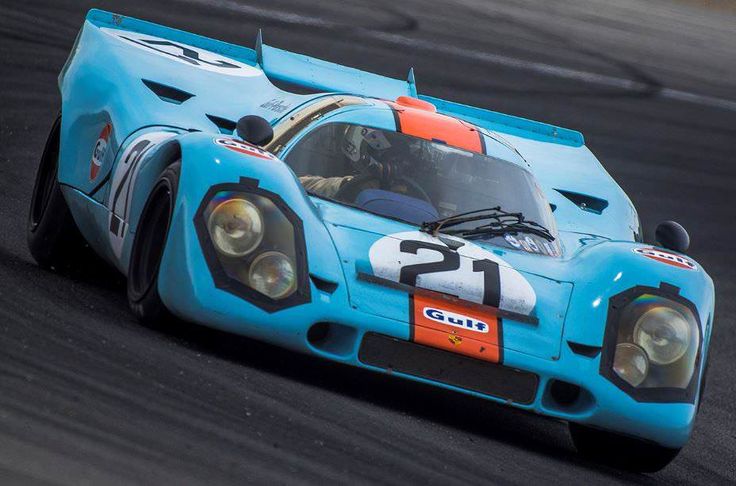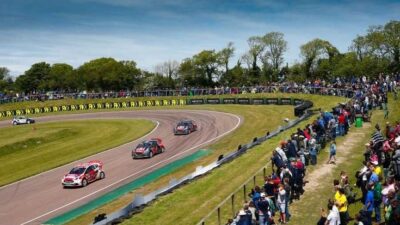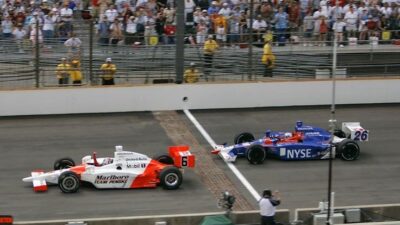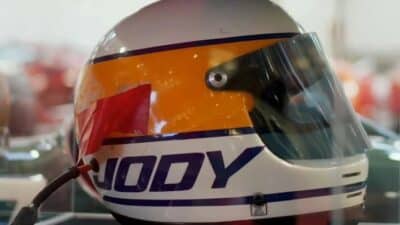1) 1907 Peking to Paris Race Start

The 1907 Peking to Paris motor race created one of the most ambitious starting lines in racing history. The race began at 8 am on June 10, 1907, in Beijing.
40 crews had accepted the challenge and paid the entry fee of 2,000 French francs. However, only 5 teams showed up at the starting line.
The starting field included a French Contal tricycle, two De Dion-Bouton vehicles from France, a Dutch Spyker, and an Italian Itala. The cars ranged from a tiny 6HP Contal tricycle to a massive 40HP Itala.
The French newspaper Le Matin sponsored this bold experiment. The race covered 14,994 kilometers to Paris.
This starting line launched what became an epic journey across two continents. The drivers faced an unknown route through Mongolia and Siberia with minimal infrastructure.
2) 1949 Ferrari 24 Hours of Le Mans Start

The 1949 Le Mans race marked a historic moment for Ferrari. The Italian manufacturer entered their first Le Mans competition with the Ferrari 166 MM Barchetta.
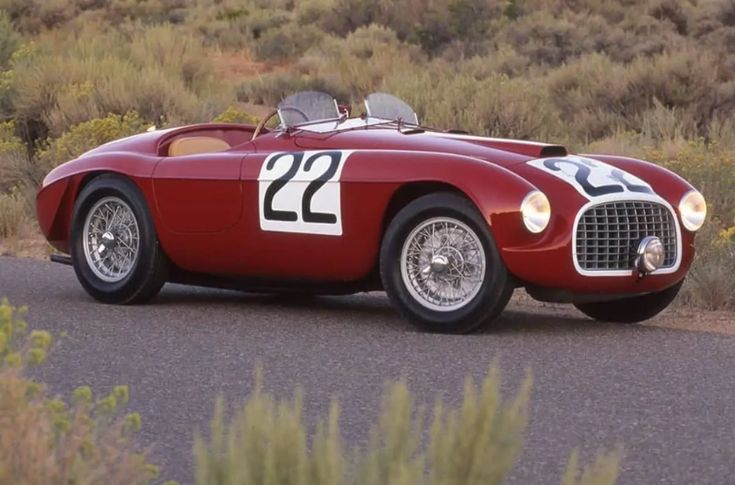
Luigi Chinetti drove the Ferrari for most of the race. He spent 22.5 hours behind the wheel during the 24-hour endurance test. Peter Mitchell-Thomson served as his co-driver.
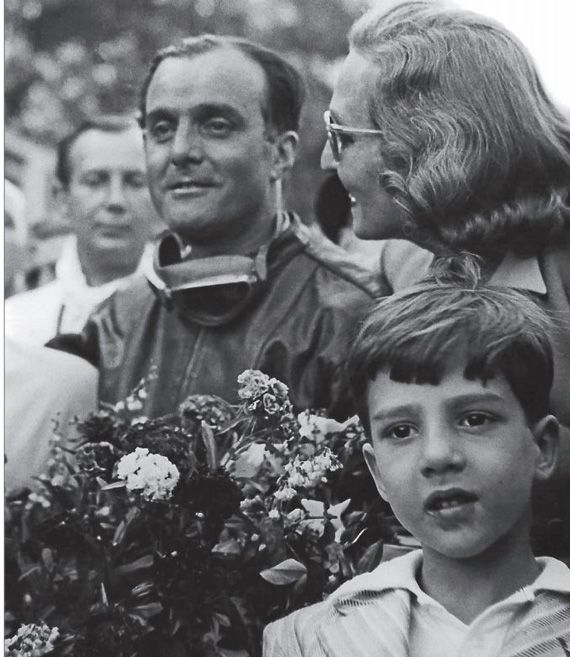
The race used the traditional “Le Mans start” format. Drivers ran across the track to their cars when the race began. They then jumped into their vehicles and started racing.
Ferrari’s debut proved successful from the start. The 166 MM made racing history in its first Le Mans appearance.
Chinetti’s victory was especially notable. This win made him the first driver to win Le Mans three times. His previous victories came in 1932 and 1934.
The 1949 race resumed after a break during World War II. Ferrari achieved their first overall Le Mans victory with Chinetti and Mitchell-Thomson behind the wheel.
3) 1955 Mille Miglia Start with Stirling Moss

On May 1st, 1955, Stirling Moss set off from Brescia in a silver Mercedes-Benz 300 SLR with journalist Denis Jenkinson as his co-driver. The 25-year-old British driver was about to make racing history.
The 1955 Mille Miglia was a 1,000 mile motor race held on public roads around Italy on April 30-May 1, 1955. Their car carried the famous start number 722, which matched their 7:22 AM start time.
Mercedes-Benz had signed Moss to drive one of their 300SLR sports racers, but only two non-Italian drivers had ever won the event before. The team’s original plan was simple: Moss was supposed to set a fast pace to make competitors make mistakes.
The race attracted a record 521 entries that year. Jenkinson had prepared detailed pace notes on a scroll, giving them a secret advantage over other teams who relied on memory alone.
4) 1967 Monaco Grand Prix Start

The 1967 Monaco Grand Prix start took place on May 7, 1967, at the Circuit de Monaco. This race served as the second round of the Formula One World Championship.
Twenty drivers lined up on the starting grid for the 100-lap race. The field included top competitors like Denny Hulme, who would go on to have a strong showing in the event.
The start itself proceeded without major incident as cars accelerated away from the grid. Drivers navigated the tight first corner at Sainte Devote as they began their journey around Monaco’s challenging street circuit.
The race distance covered 314.5 kilometers around the 3.145-kilometer track. Cars spread out quickly after the start due to Monaco’s narrow layout and limited overtaking opportunities.
While the 1967 Monaco Grand Prix would later become remembered for tragic events during the race, the opening moments saw a clean getaway from the starting line. The field settled into racing rhythm as they began what would become a significant chapter in Formula One history.
5) 1976 Japanese Grand Prix Start

The 1976 Japanese Grand Prix delivered one of racing’s most dramatic championship-deciding starts. Heavy rain soaked Fuji Speedway on October 24, creating treacherous conditions for the season finale.
Niki Lauda sat on pole position. The Austrian driver had returned from his horrific Nürburgring crash just weeks earlier. His rivalry with James Hunt had captivated the motorsport world throughout the season.
When the green flag dropped, visibility was nearly zero. Drivers could barely see beyond their front wheels in the torrential downpour. The spray from 26 cars created a wall of water that made racing nearly impossible.
Lauda made a shocking decision after just two laps. He pulled into the pits and withdrew from the race, believing the conditions were too dangerous. This move handed the championship advantage to Hunt.
Mario Andretti took the early lead from the chaotic start. The Lotus driver navigated the treacherous opening moments while others struggled with the wet track surface.
The dramatic start at Fuji ultimately decided the world championship. Hunt’s determination to continue racing in the dangerous conditions would prove crucial to his title fight.
7) 1991 Monaco Grand Prix Start

Ayrton Senna secured pole position for the 1991 Monaco Grand Prix on May 12, 1991. The Brazilian driver lined up at the front in his McLaren-Honda for what would become his fourth consecutive win of the season.
When the lights went out, Senna maintained his lead into the first corner. His perfect start allowed him to control the pace from the opening lap around the narrow Monaco circuit.
The start proved crucial in Monaco’s tight confines where overtaking opportunities are limited. Senna’s clean getaway set the tone for his dominant victory in the 78-lap race.
Behind Senna, Nigel Mansell held second position in his Williams-Renault. The start allowed both drivers to establish their positions early in what would become a memorable Monaco victory for Senna.
This start marked another step toward Senna’s record-setting Monaco dominance. The flawless launch from pole position demonstrated why he became known as the master of Monaco’s challenging street circuit.
9) 2005 San Marino Grand Prix Start

The 2005 San Marino Grand Prix featured one of Formula One’s most dramatic opening sequences. Kimi Räikkönen secured pole position for McLaren at Imola’s challenging circuit.
When the lights went out on April 24, 2005, the field launched into the first chicane with typical aggression. The opening moments quickly reshuffled the grid order as drivers jockeyed for position through the technical first sector.
Fernando Alonso and Michael Schumacher emerged as the main protagonists early in the race. Their battle would define the entire 62-lap contest at the Autodromo Enzo e Dino Ferrari.
The start set up what became one of the most thrilling races in Formula One history. The initial grid positions proved less important than the strategic moves that followed in the opening laps.
Alonso’s early positioning allowed him to challenge for the lead. His aggressive start helped establish the foundation for his eventual victory by just 0.215 seconds over Schumacher.
Historical Context of Iconic Racing Starts

Racing starts have transformed dramatically since the late 1800s, moving from simple flag drops to sophisticated electronic systems. Rule changes have repeatedly reshaped how races begin, creating legendary moments that define motorsport history.
Evolution of Starting Techniques
Early automobile races in the 1890s used basic flag drops or pistol shots to begin competitions. The first organized racing events featured drivers simply lining up and waiting for a signal.
Le Mans running start became famous in 1923. Drivers sprinted across the track to their cars before the race began. This created dramatic television moments but ended in 1969 due to safety concerns.
Rolling starts emerged in oval racing during the 1920s. Cars circled the track in formation before receiving the green flag. This method reduced accidents caused by stationary starts.
Standing grid starts dominated Formula 1 from its beginning in 1950. Cars lined up in predetermined positions based on qualifying times. The procedure became more precise with timing lights in the 1960s.
Modern electronic starting systems replaced human flagmen in many series. Red lights count down before going out simultaneously. This eliminates human error and creates fairer race beginnings.
Impact of Rule Changes on Race Beginnings
Grid position rules changed how drivers approached qualifying. F1 introduced the current qualifying format in 2006, making pole position more valuable. Faster cars now start ahead consistently.
Jump start penalties became stricter in the 1990s. Electronic sensors detect early movement. Drive-through penalties replaced simple warnings, making clean starts crucial for race victories.
Restart procedures evolved after numerous accidents. NASCAR implemented the double-file restart in 2009. Lead lap cars line up on the inside, while lapped cars take the outside lane.
Safety car periods changed race dynamics completely. The bunched field creates new starting scenarios multiple times per race. Leaders lose advantages while backmarkers gain opportunities.
Green-white-checker finishes in NASCAR prevent races from ending under caution. Multiple restart attempts can occur, creating additional iconic starting moments in the final laps.
Significance and Legacy of Notable Racing Starts

Legendary racing starts have fundamentally changed how drivers approach race strategy and created lasting cultural moments that define motorsport history. These pivotal moments established new tactical approaches while cementing races as defining cultural events.
Influence on Racing Strategy
Notable racing starts revolutionized tactical decision-making in motorsport. Secretariat’s explosive 1973 Triple Crown performance demonstrated how aggressive early positioning could secure victory margins previously thought impossible.
Modern pit crews now study historic race starts to develop timing strategies. Teams analyze data from legendary openings to predict optimal positioning windows.
Key Strategic Changes:
- Positioning tactics – Drivers learned to claim inside lines earlier
- Fuel management – Teams adjusted consumption rates based on opening pace
- Tire strategy – Crews modified compound selection for different start scenarios
Racing academies teach students about famous starts as foundational lessons. Instructors use video analysis of iconic moments to illustrate risk-reward calculations.
Driver training programs incorporate simulation exercises based on historic racing starts. These programs help racers understand split-second decision-making under pressure.
Cultural Impact in Motorsport History
Iconic racing starts created shared cultural experiences that transcended sport boundaries. The Kentucky Derby’s influence on thoroughbred racing established traditions that continue shaping American racing culture today.
Television coverage transformed dramatic starts into nationwide events. Broadcasters began focusing cameras on starting line tension to capture these pivotal moments.
Racing starts inspired artistic expression across multiple mediums. Photographers captured motion blur images that became iconic representations of speed and competition.
Cultural Legacy Elements:
- Media coverage – Networks developed specialized start-focused programming
- Fan traditions – Spectators created rituals around famous starting moments
- Commercial impact – Sponsors invested heavily in start-line advertising
Museums now dedicate exhibits to legendary racing starts. These displays preserve the emotional impact these moments had on spectators and participants alike.
Frequently Asked Questions

Racing history spans over a century with organized competitions beginning in the 1890s. The oldest continuous races like the Indianapolis 500 and 24 Hours of Le Mans continue today.
Which was the very first motorsport event in history?
The first organized motorsport event took place in 1894. The Paris-Rouen race covered 78 miles from Paris to Rouen, France.
This event was called a “competition for horseless carriages.” Twenty-one vehicles participated in the race on July 22, 1894.
The winner was Albert de Dion driving a steam-powered vehicle. However, organizers gave the official prize to a gasoline-powered Peugeot because it was more practical.
What is the timeline of the evolution of race cars?
Race cars evolved rapidly from 1894 to the 1920s. Early vehicles were modified road cars with minimal safety features.
The 1900s brought purpose-built racing machines. Cars featured larger engines and lighter frames designed specifically for speed.
By 1920, aerodynamics became important. Manufacturers started creating streamlined bodies to reduce wind resistance.
The 1930s introduced supercharging and advanced suspensions. These innovations helped cars reach speeds over 200 mph on certain tracks.
Who is credited with inventing the first race car?
No single person invented the first race car. Early racing vehicles were modified versions of existing automobiles.
Karl Benz created one of the first racing cars in 1894. His vehicle competed in the Paris-Rouen race using his patented motorwagen design.
Panhard et Levassor also built early racing cars in France. Their vehicles used Daimler engines and competed in multiple events during the 1890s.
What is the oldest car race in the world that is still active today?
The oldest active car race is the Gordon Bennett Cup from 1900. However, this event stopped running regularly after 1905.
The French Grand Prix started in 1906 and continues today. It represents the oldest continuously held Grand Prix race in Formula One.
The Indianapolis 500 began in 1911. This American race has run annually except during World War I and World War II.
What are some of the oldest car races that continue to be held?
The 24 Hours of Le Mans started in 1923. This endurance race tests both speed and reliability over a full day.
The Monaco Grand Prix began in 1929. The street circuit remains one of the most prestigious races in motorsport.
The Mille Miglia ran from 1927 to 1957 as a speed race. It now continues as a historic car rally covering the same Italian route.
The Targa Florio started in 1906 in Sicily. While the original race ended in 1977, modern versions still take place.
In what year is it believed that organized car racing began?
Organized car racing began in 1894 with the Paris-Rouen competition. This marked the first official motorsport event with rules and prizes.
The sport grew quickly after this initial race. By 1895, the Paris-Bordeaux-Paris race covered over 700 miles.
Racing became more structured in the early 1900s. The Automobile Club de France established formal regulations and championship systems by 1906.
